|
The wonderful Library As Incubator Project has published a feature on the Whiteboard project. LAIP was created by 3 talented librarians from Wisconsin to promote and facilitate creative collaboration between libraries and artists of all types, and to advocate for libraries as incubators of the arts.
Lightweight, global, collaborative LAIP taps into the collective imagination as libraries hurtle into the future. If you are an artist and/or love libraries support this fantastic project and join the conversation.
1 Comment
Here's a video of the Whiteboard project. For the best view choose full screen and the highest resolution.
A few weeks ago, I bumped into Genevieve in the corridor. She was very apologetic but had to tell me that something had happened to the drawing I had made for them in Swinburne Hall. Um, ok. A friend was visiting her at the library and she wanted to show her the whiteboard drawing in their work area of the wallaby and emu. Her friend is a librarian and archivist. They were admiring the drawing and then the woman reached out and stroked her finger across the drawing. Of course the drawing disappeared instantly under her touch leaving a a bright empty swatch where carefully rendered fur had been. I think they were both a bit shocked at how suddenly it vanished. I was pretty surprised by the story. I'm sure she hadn't meant to damage the drawing. It sounded like an unconscious spontaneous reaction to something interesting. It is such a powerful impulse to reach out and actually connect with something that interests or fascinates. I took my camera over to the area to document this strange gesture and to my surprise someone else had done it to the emu as well! Some time ago I was at the Melbourne Zoo and we had arranged to go behind the scenes for a close encounter with the Sumatran tigers. The keeper explained the procedure including the thick yellow lines on the footpath in front of the enclosures. 'Do not cross the line and DO NOT put your fingers through the wire, you will lose them'. We laughed nervously, of course not! For our encounter we were each allowed to feed a big syringe of tasty milky vitamin stuff to a tiger through the cage mesh. My tiger came straight up to me and began greedily licking the end of the syringe. He stared at me with deep glowing eyes and the rich orange fur of his muzzle was only centimeters away. I was suddenly gripped by an overwhelming urge to touch this gorgeous creature. Just one little stroke of that velvety nose. I could just poke my fingers through... I felt hypnotized. We have to touch, we just can't not touch. 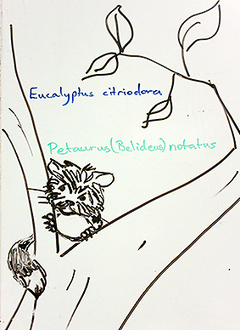 Wandering through Bride L2, I noticed some additions had been made to Sue's drawing. There was a fluffy creature in the tree, several new bugs, a rodent and a turtle of some description. I set about identifying the new species as soon as possible. I consulted Gould's Mammals of Australia, regarding the squirrel-like creature. Noting the semi-prehensile tail with white tip, sharply defined paws, large eyes and delicate ears I decided it might well be a sugar glider, Petaurus breviceps (formerly Belideus notatus, Gould,1863). 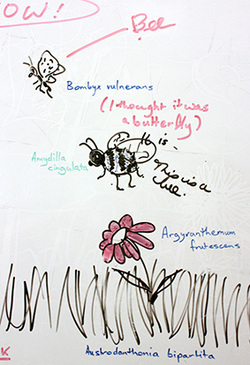 After some dispute as to whether the small flying insect in the middle of the drawing should be classified under the order Lepidoptera or Hymenoptera, the matter was settled with the arrival just below it of the blue banded bee, (Amegilla cingulata). I must apologise for the incorrect spelling in the illustration. I'm only Homo sapiens. The newly identified creatures are labelled in green and all appear to be native to Australia. In addition to those mentioned, they include the Murray River turtle (Emydura macquarii), the Greater stick-nest rat (formerly Hapalotis conditor) and the Giant grasshopper (Valanga irregularis). This grasshopper is sometimes confused with the Australian plague locust, however it is much larger, as can be seen from its scale relative to the domestic dog in the image at the top of this post. I came back to finish off the rainbow lorikeet after working on other drawings. In the interim the colours seemed to have faded a bit and started to lift off. The bursting pinboard beside it had started to encroach as well. There were notes stuck on with sticky tape and hastily scrawled messages - "keep the takeaway containers coming, thx!" The tide of information was rolling in over the dormant image. I gently shifted a few notes back so I could finish the drawing. I softened the message in red about takeaway containers in the bottom left of the whiteboard and allowed it to show through the text I laid over it. I couldn't resist slapping on a bit more colour here and there to bring the bird back to life and help him stand his ground against the rowdy clutter next door. This was certainly a much busier noticeboard than others I had work with. It is in the kitchen of a crowded open plan office where many of the librarians work. It may prove a tougher spot for such a drawing to survive. There are several whiteboards down on Bride level2. When Sue was showing me around the office she pointed out a very handy one beside the door opposite the lift. It was one of the very few whiteboards I saw that already had a drawing on it. I asked who had conjured this pastoral delight and Sue confessed she was in fact the artist (nice one Sue!). I felt bad about rubbing the drawing out so I asked if she was sure she wanted me to draw on this board. Absolutely, she said, go for it. (There was a second board at the other end of the office that was also available, but it was behind a desk and awkward to get to.) Hmmm. I thought long and hard about what to draw on this board and nothing seemed quite right. I also still felt bad about rubbing out Sue's drawing so I decided to collaborate instead. As I looked at the drawing I became more intrigued by it. It had a compelling unity as an archetypal environment. The cartoon style underscored the primacy of the elements - a diversity of plants and animals living in harmonious balance in a benign climate. I wondered, where is this happy place? What inspired it? I decided it was an Australian landscape, but if this was so, at least a few of the jolly residents were introduced species. Sadly, two of these animals have been particularly destructive to the Australian environment (dogs and rabbits) but they do make great pets. Bringing in mice probably wasn't a great idea either. Then there are cats. And us. But this landscape could just as easily be European. If it is California the tables turn and a new villain emerges. As a cultural /imaginary landscape this composition functions effortlessly. Constructed in the real, biological world it is a lot more complicated and unstable. Things can be easy to change but harder to fix.
Here is the list of species depicted in Sue's drawing as I have identified them: Eucalyptus citriodora Colluricincla harmonica Bombyx vulnerans (after John Lewin, 1805) Canis lupis familiaris Argyranthemum frutescens Mus musculus Austrodanthonia bipartita Oryctolagus cuniculus I came in on the weekend to do some more drawing and as I was walking through the Information Centre I saw two of the whiteboard drawings up on the desktops of the staff PCs. I was very pleased to see them migrating to a new environment in the library. The Australian Frog had been given a traffic-stopping psychedelic makeover, which made Mr Nodder's original interpretation comparatively plausible. Excellent work! Thank you mysterious art fan :) So after some hasty documentation I headed to the Web Unit over the Newspaper reading for some more "fishing". Dot, dot, dot, dot, dot, dot ,dot, dot... (some hours later) dot, dot,dot. The third and final fish in the trio is completed - the Granulated Balistes, as it was known in Sarah Stone's day (sometime in 1789). The names of animals and plants quite often change over the years, which is rather ironic given the zealous lengths the early naturalists went to to discover, name and claim the worlds flora and fauna in the 18th and 19th century. Fiona Negrin, who works in this section, gave names to the fish when they were just sketched in so I have included these common names in the drawing alongside their 18th c. counterparts. I have no doubt the Pungent chaetadon, Doubtful Sparus, and Granulated Balistes now go by different names again in zoological circles but to their friends in the web unit they are Angel, Cuttle and Puffer.
Did I mention everything takes longer than you think it will? I have spent several days on the rakali, getting lost in Ferdinand Bauer's beautiful watercolour and the challenge of refining and refining. A few months back I found a definition of natural history that really resonated with me - "the patient interrogation of a landscape". This image became an intense conversation between me, Bauer, the rakali and the whiteboard, as I struggled to translate the subtle intimacy of a 19th century watercolour into the native media of a contemporary office space - partition walls, glass and dry erase markers. Memory, observation, trial and error, interpretation, concentration, expression, perseverance. There is something about drawing that makes you more aware of the processes of thought. I remember something catching my eye in the silky darkness of Burnley Harbour one night, couple of years ago, when I was riding home from work. I stopped my bike. Something rippled and vanished under the water, suddenly appearing metres away, then disappearing again. I thought, that's impossible, there are no otters in the Yarra. The white tipped tail was the give away, that's how I later identified the mysterious creature. I've only seen them a few times since, after dark when the bike track and the river are quiet. During my fellowship I planned to look at a wide range of early Australian natural history sources, starting with the best. So I requested the natural history drawings of Ferdinand Bauer. Reverently I opened the large solander box, and lifted out the plates one by one. There at the top was a beautiful, lithe rakali and I felt a wave of empathy and recognition for the artist and his subject. I like to think Bauer observed the rakali in some dusky waterway but I suspect his painstaking and delicate work was based on a considerably more compliant model. Though I hadn't thought of the whiteboard project at that time, a couple of months later, when Mark showed me the two metre wide glass panels over his desk in Rare Books, I immediately knew what the subject would be. 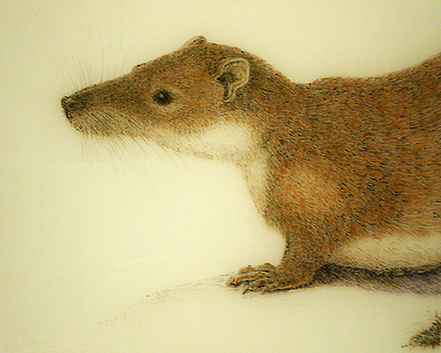 A detail of Rakali's head. I am rather proud of the whiskers. Happy new year! I had a bit of a break over Christmas and I'm back in my normal job after a fabulous couple of months on the fellowship. I will continue with the Whiteboard project in my own time, so progress will be slower but there are still lots of wonderful things to draw. The last thing I finished before Christmas was a diabolical frog, after Frederick Polydore Nodder, from The Naturalist's miscellany vol. 6, by George Shaw, [1790-1813]. He is installed in the Finance department, level 5, Armstrong building. 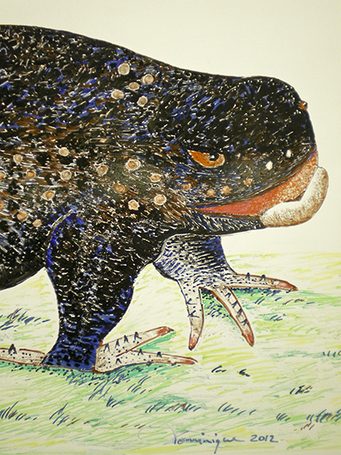 The following text accompanies the illustration in the Miscellany: THE AUSTRALIAN FROG This animal certainly cannot be numbered amongst the most beautiful of its genus, it is a species however, which has never before been described, and is more peculiarly interesting from the circumstance of its being native of the distant region of New Holland, which has added so many zoological treasures to the cabinets of natural history. Its rarity must therefore apologize for its deformity I suspect Mr Nodder's rendering bore little resemblance to the the real thing but it is wonderfully lively despite its "deformity". There is a naivety to the image which makes it hard to believe it is the same artist that produced such careful studies of banksia cones. I guess in those days curious cones traveled better than pickled frogs. I went for a chunkier, looser technique with this image, in keeping with its primordial subject. As usual the whiteboard markers fought me tooth and nail as I tried to bend them to my will and drag density and tone out of them. |
AuthorDominique Dunstan is a reference librarian and artist. She works at the State Library of Victoria and has recently completed the Jane Nicholas Staff Fellowship. Archives
July 2013
Categories |

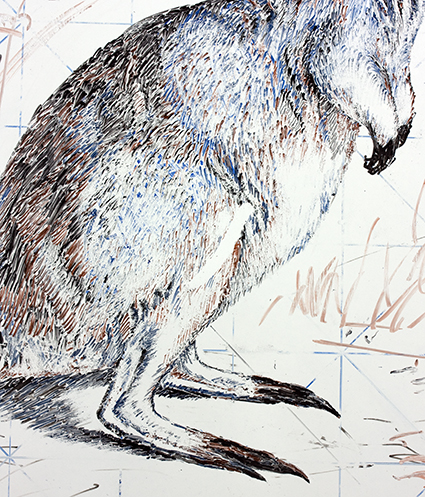
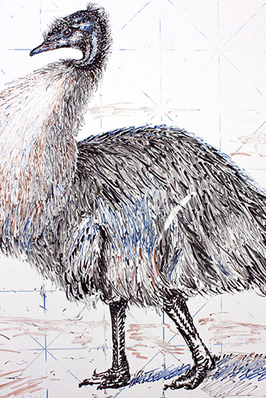
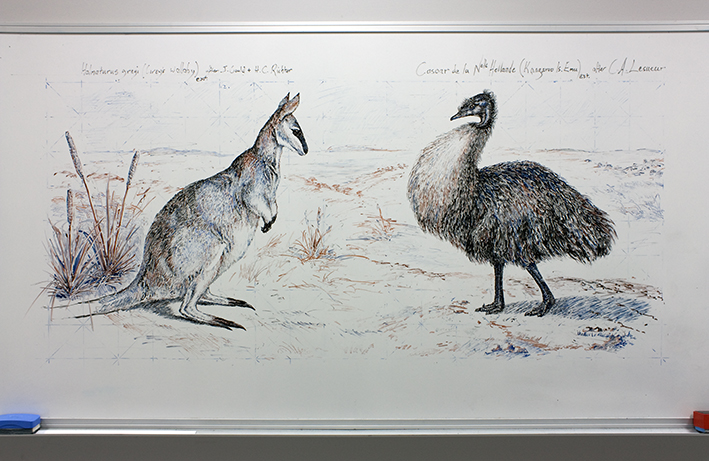
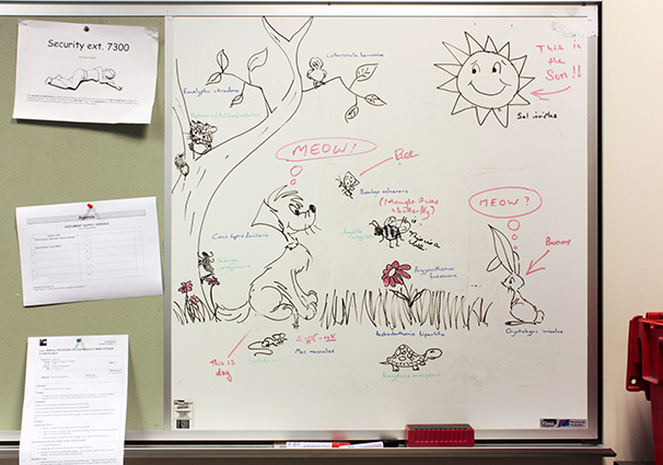
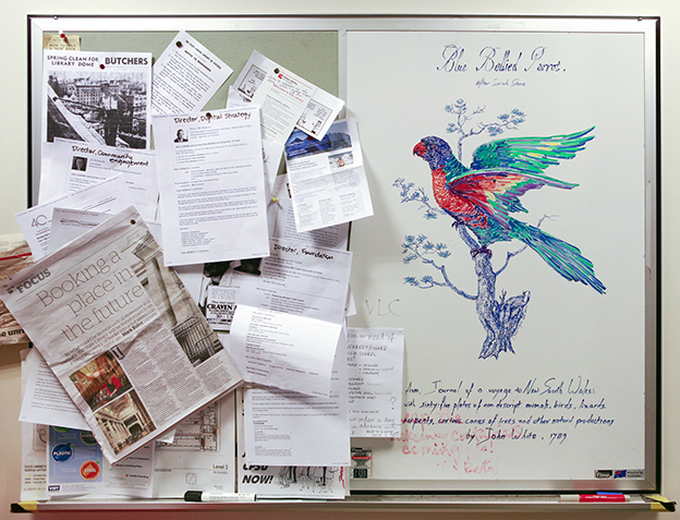
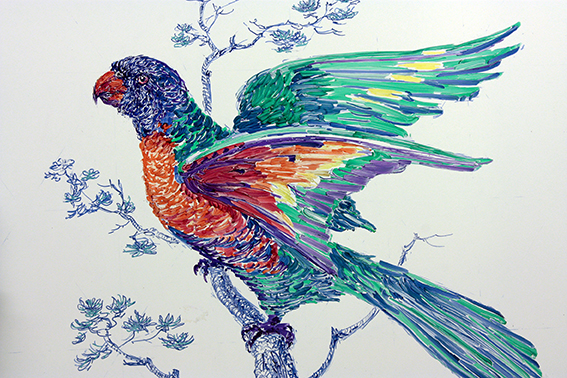
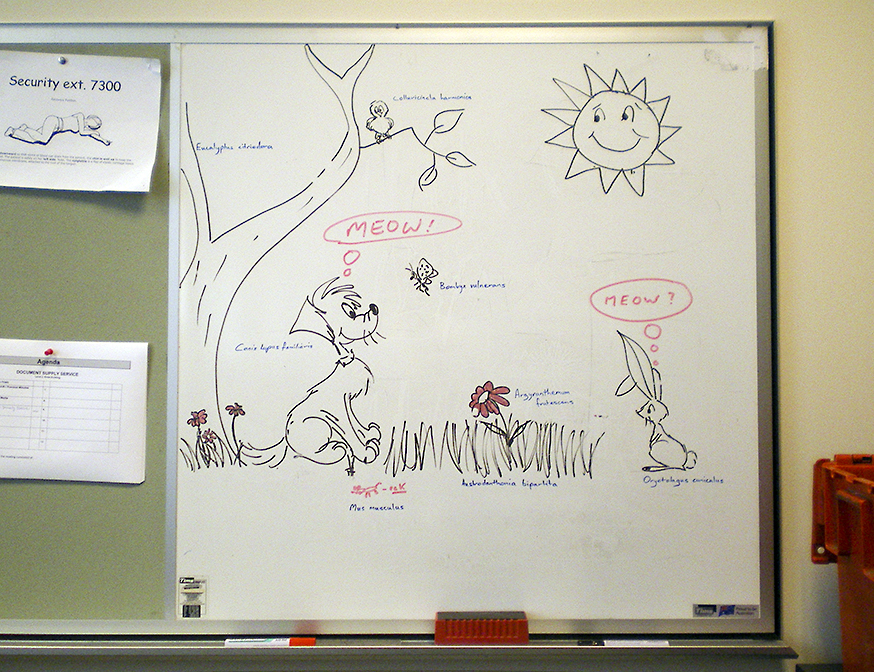
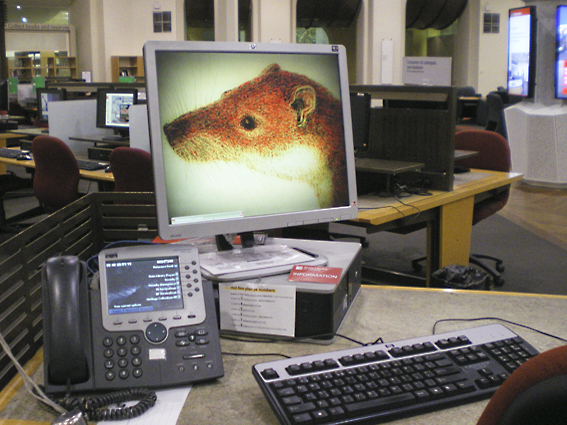
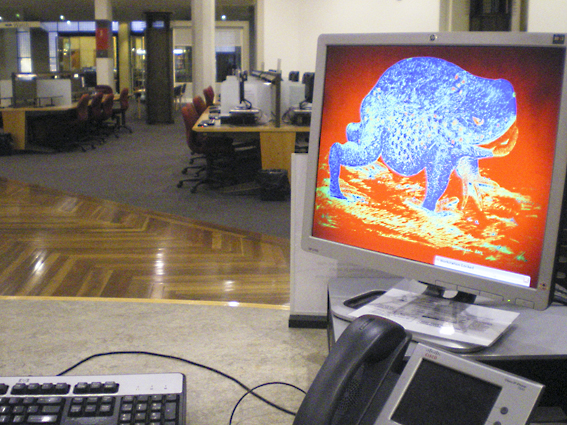
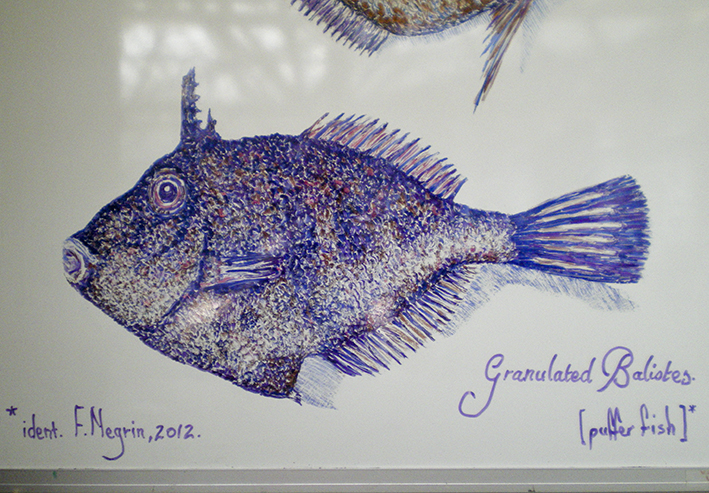
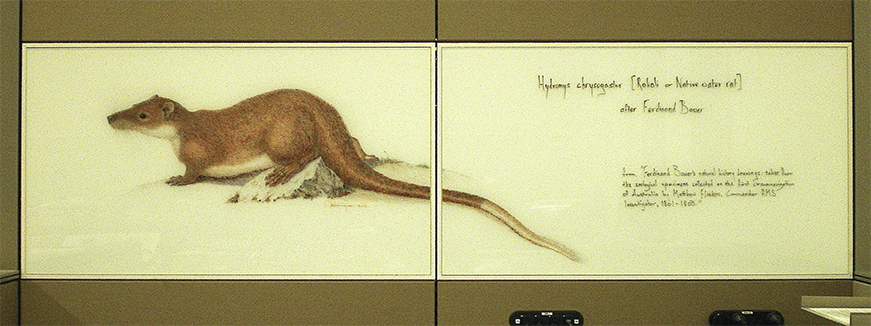
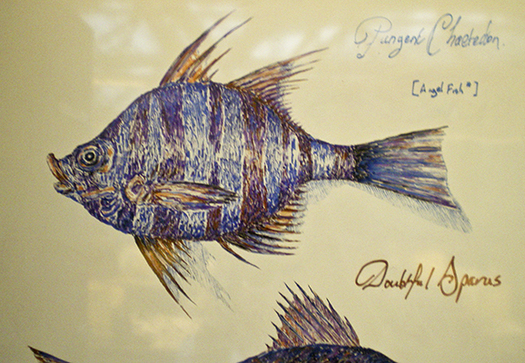
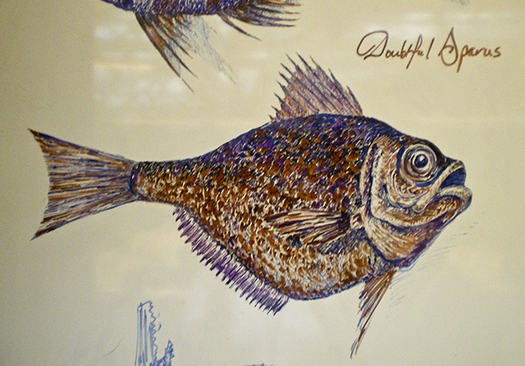
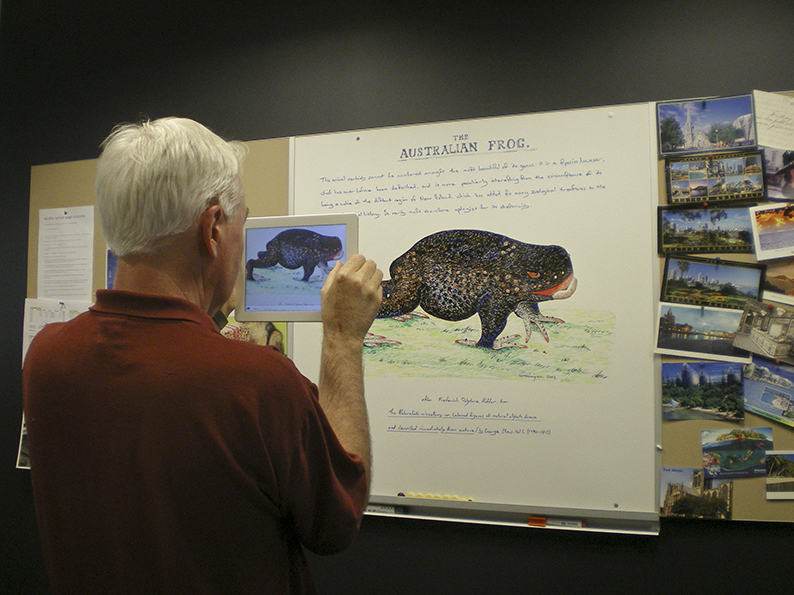
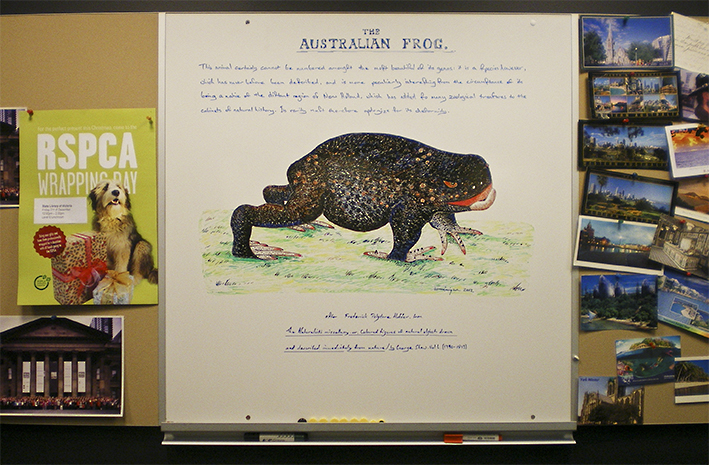
 RSS Feed
RSS Feed